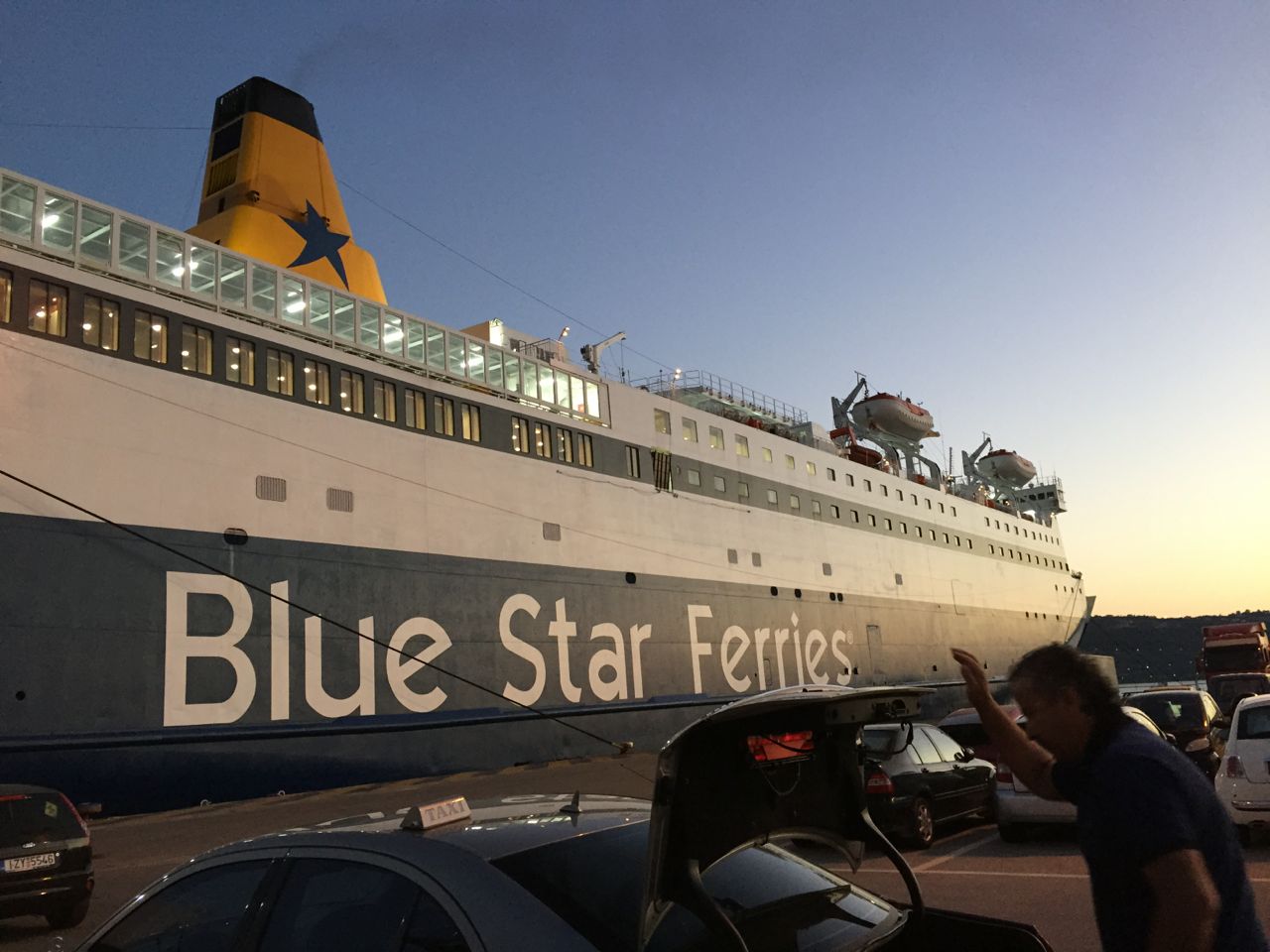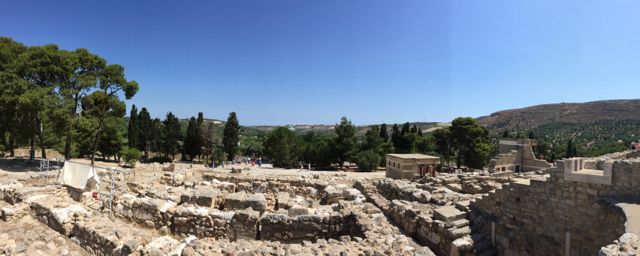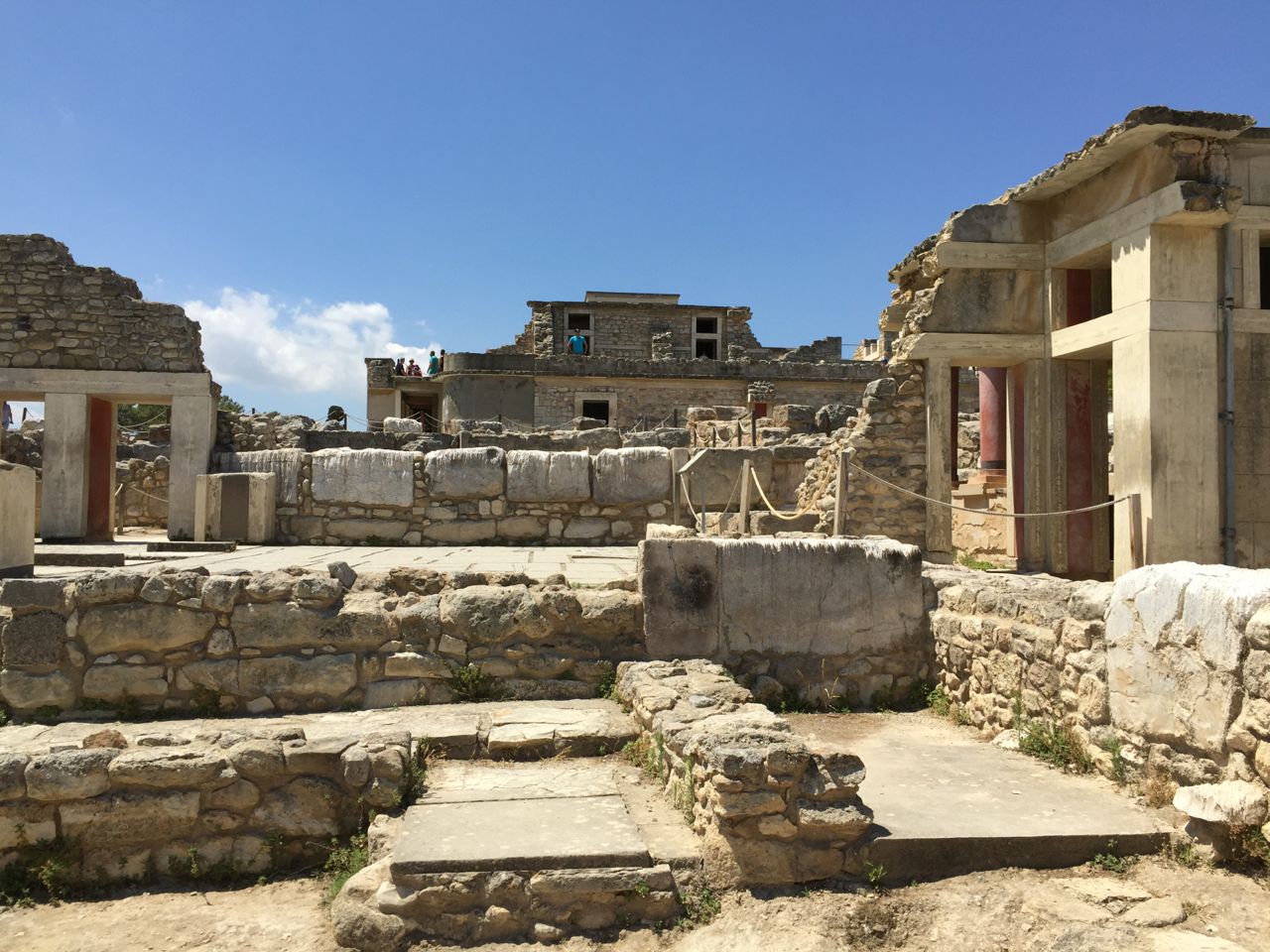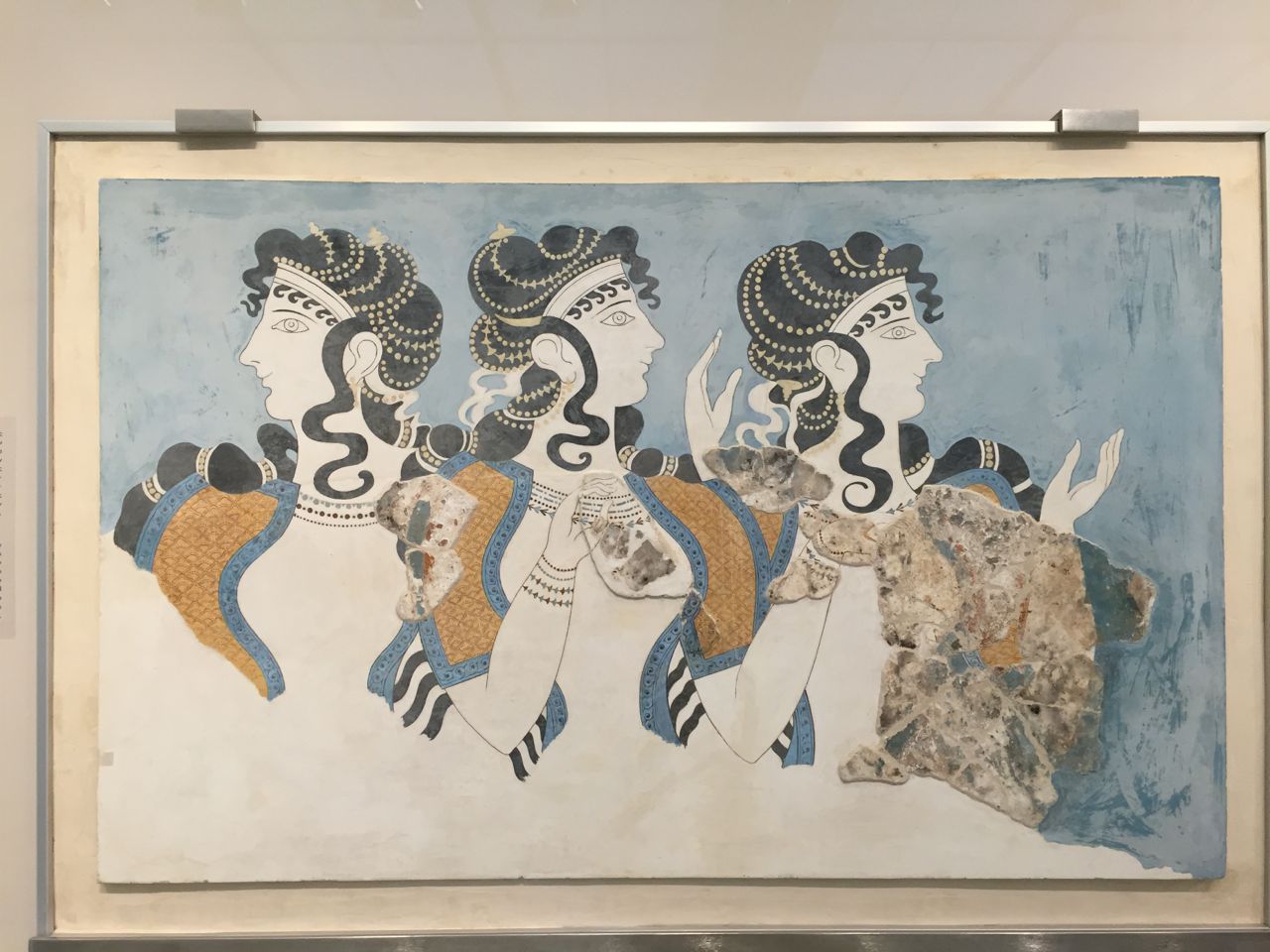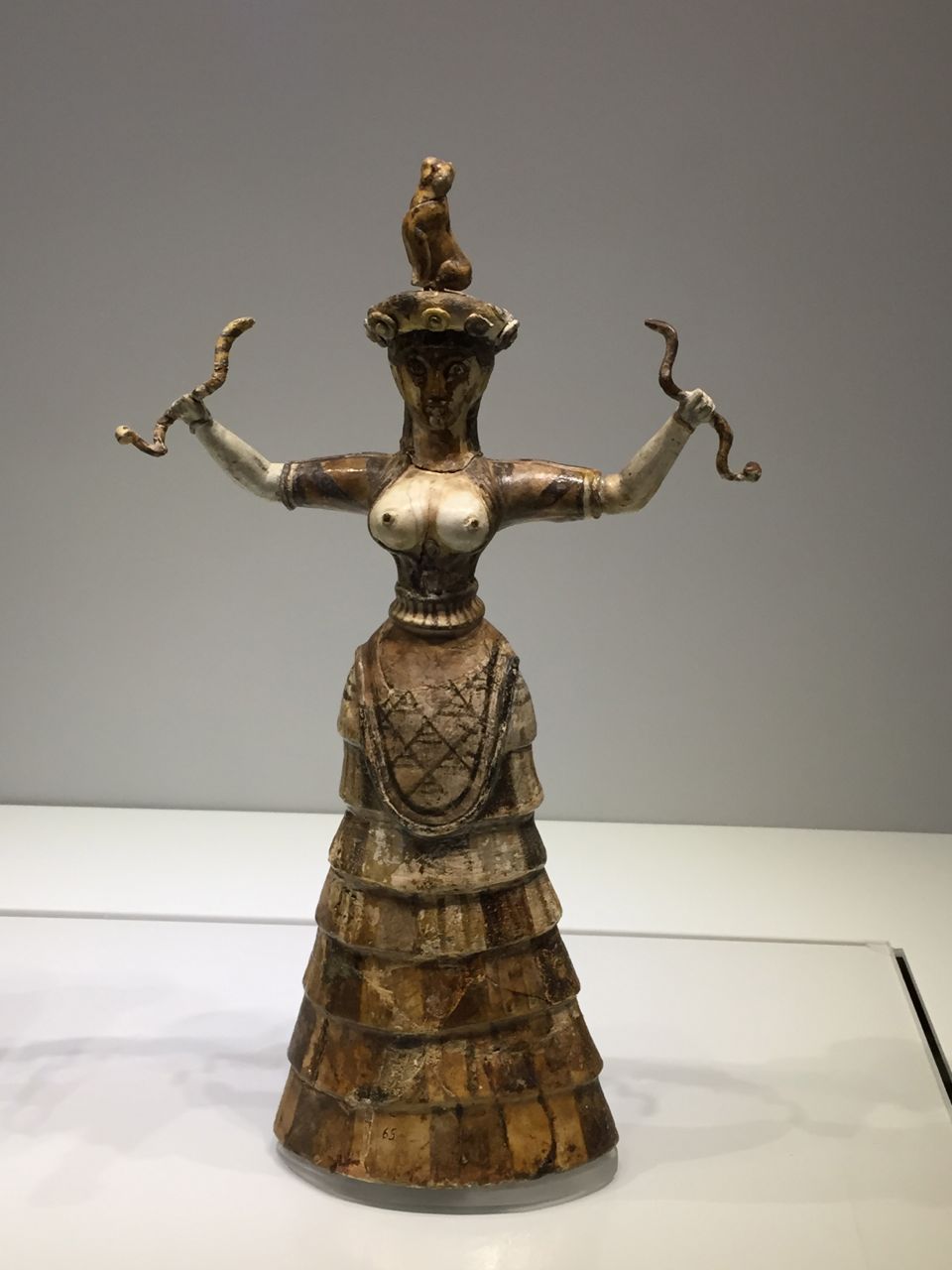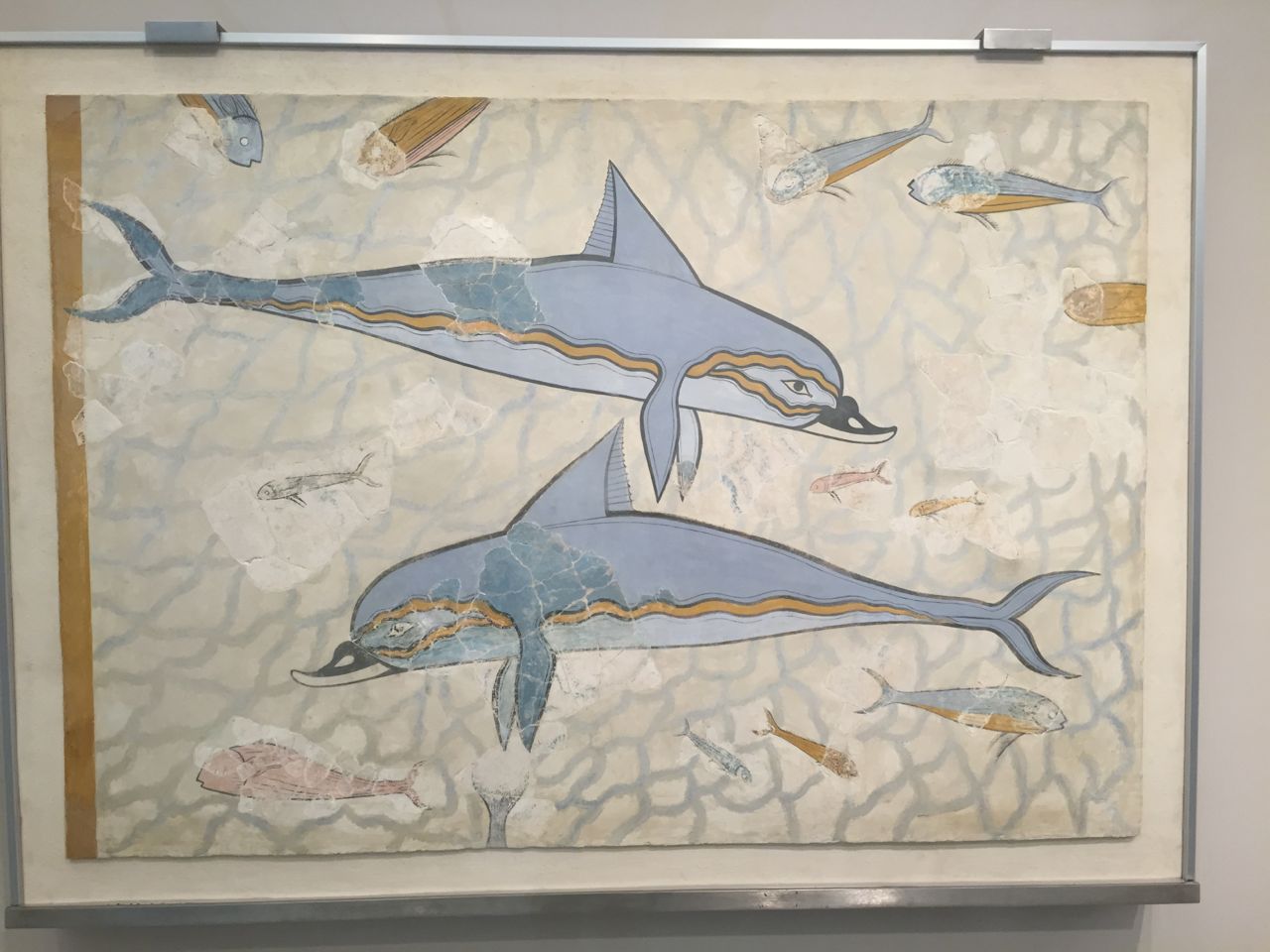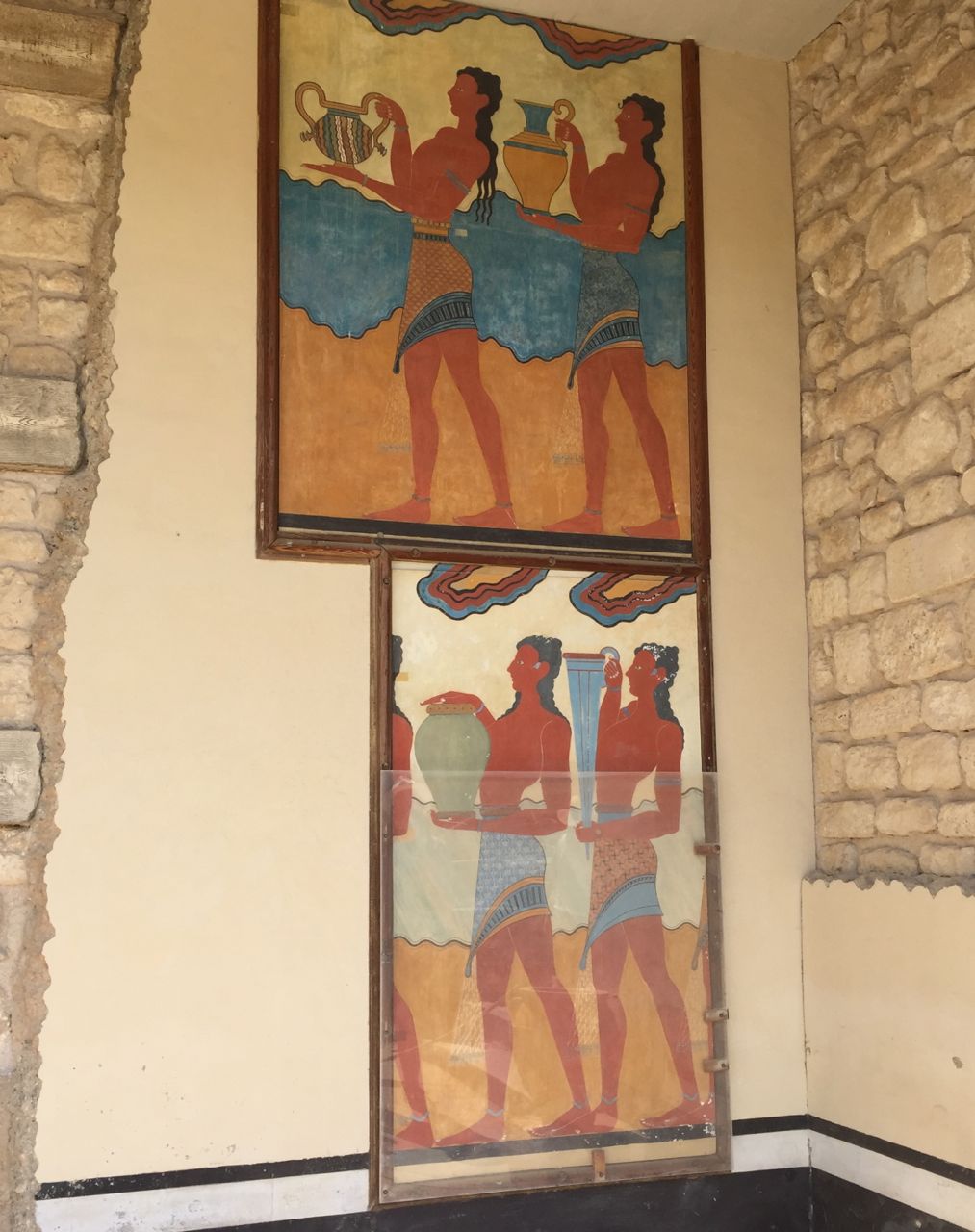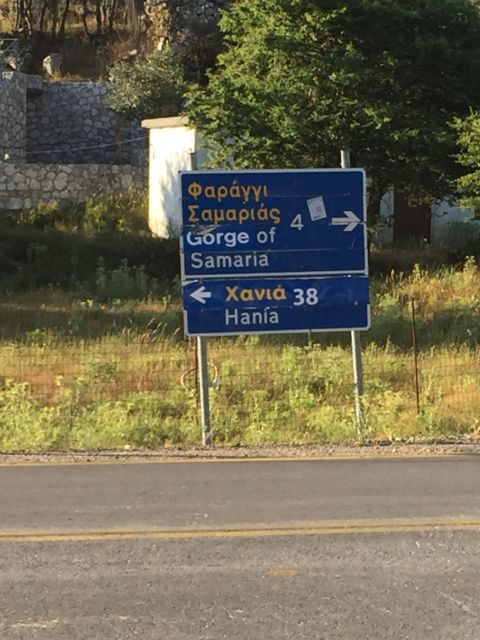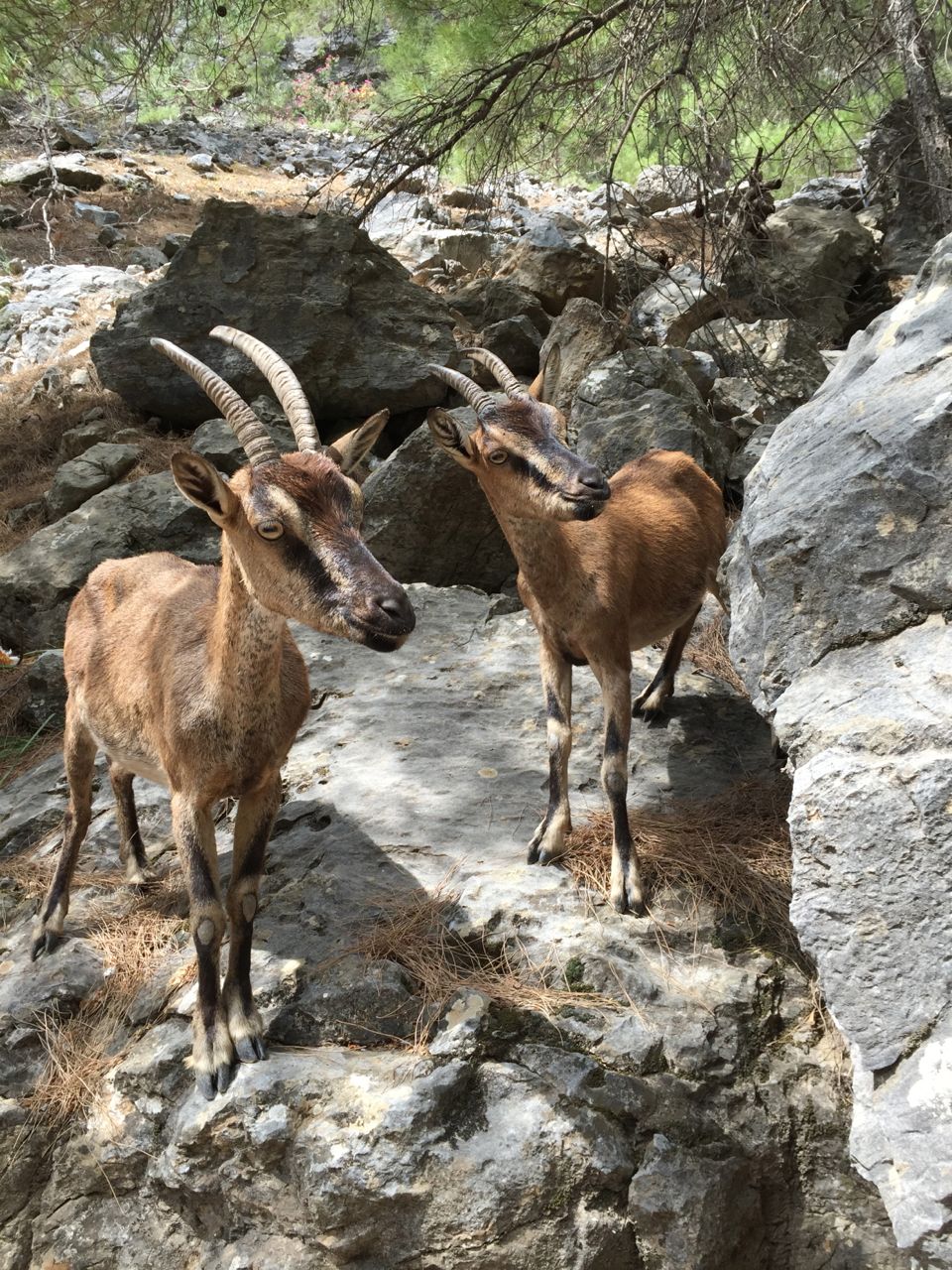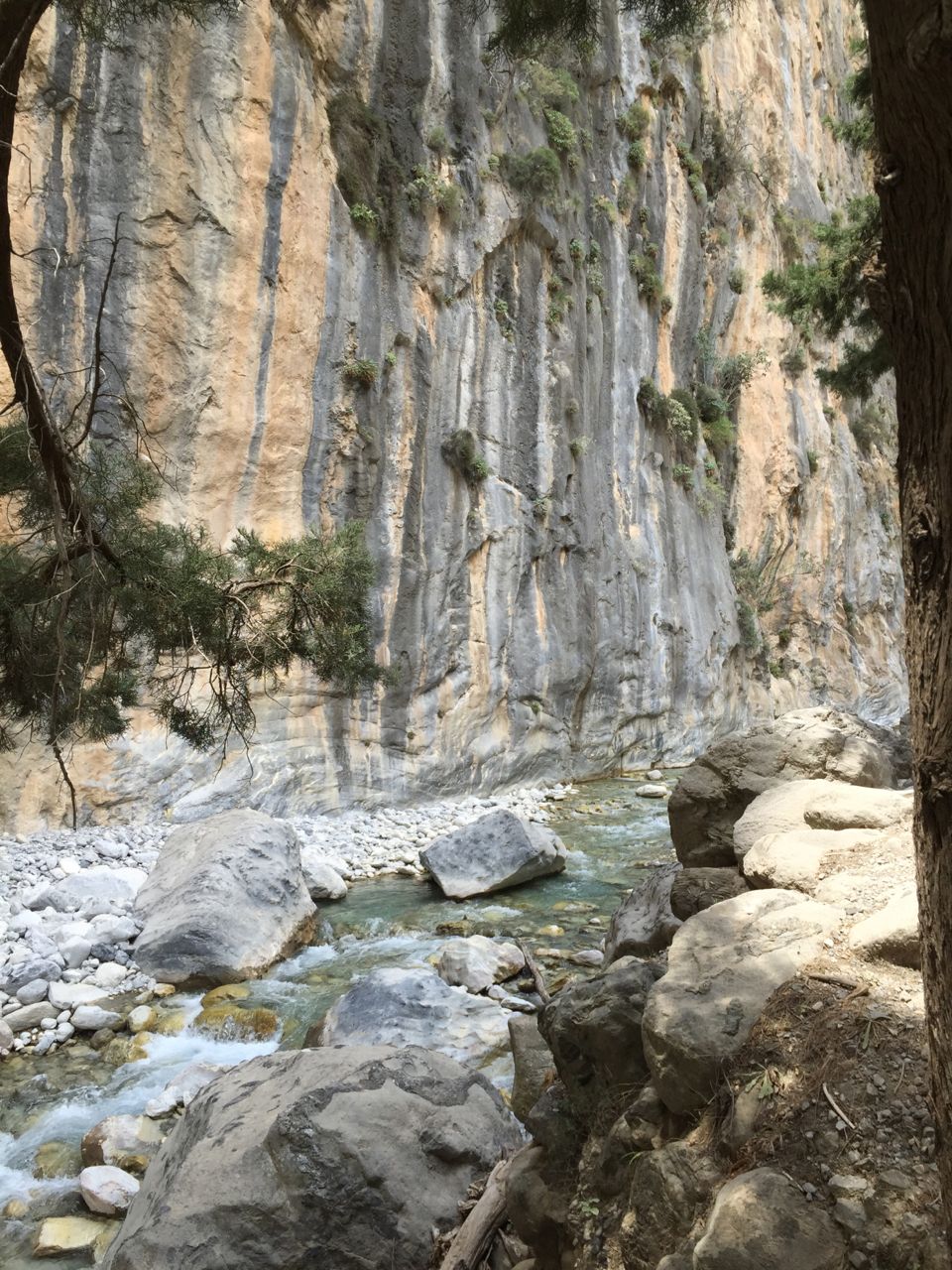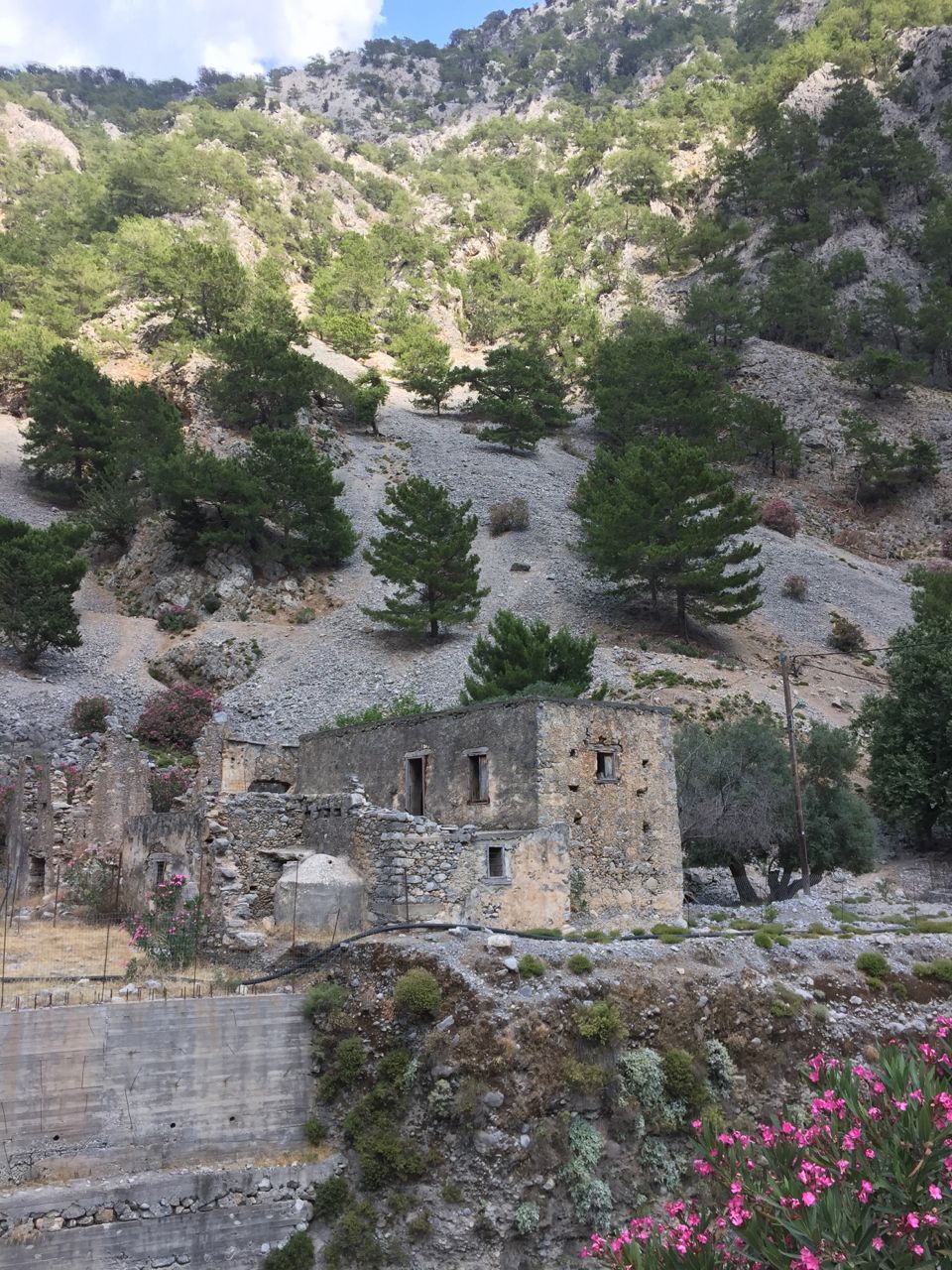by Betsy Herbert
June 11, 2015
People lined up all over Athens to withdraw funds from their bank accounts during the EU Greek crisis. I snapped this photo on July 1, the day I left Greece.
Foreward: I want to state up front, that despite the EU/Greek crisis dominating the headlines lately, I had a wonderful two weeks in Crete, the largest Greek Island. Though the Greek people I met were clearly concerned about the situation, they graciously went about their business. As a tourist, I was a little worried when I left Crete June 30 on the overnight ferry, because I was low on euros. I was afraid I wouldn't be able to withdraw funds the next morning from an ATM in Athens to cover my meals and bus ride to the airport later that afternoon. So when the ferry docked just before 6 a.m. in Piraeus, Athens I headed straight for an ATM. Hundreds of people were already lined up in front of the banks waiting to withdraw funds as soon as the banks opened. Thankfully, I was able to access an ATM and withdraw 100 euros (the limit), which would get me to the airport and on my way. But it was terrible to see the desperate faces of people worried about losing their savings.
I've wanted to visit Crete ever since I took my first art history class when I was introduced to the ancient Minoan murals of Knossos. Naturally, Crete was on my bucket list for my round-the-world trip, so after leaving Croatia on June 14, I flew to Athens and took the overnight ferry to Chania on the north coast of Crete.
I booked a private cabin overlooking the bow of the big Blue Star ferry, which departed exactly on time from Piraeus, Athens at 9 p.m.
Ferry pulling into Chania, Crete at 5:30 a.m. after an overnight journey from the port of Piraeus in Athens
The ferry docked at the port near Chania at 5:30 a.m., a half hour ahead of schedule.
The Blue Star Ferry docked near Chania, Crete and I took a cab to the Mistral hotel in Maleme.
It was already hot when I arrived at 6:00 a.m. by taxi at the Mistral Hotel in town of Maleme. I was glad to see a beautiful large swimming pool near the hotel entrance, though there was not yet a soul in sight.
I booked this hotel because I wanted to relax after my fab but exhausting Croatian adventure. The Mistral is a Greek family-owned and operated hotel that attracted me because of its dedication to sustainability and local and traditional Cretan food. It didn't disappoint.
While Mistral bills itself as a singles resort, I found that it really caters to solo travelers, many of whom return every year to re-connect with fellow travelers they've met at the hotel. When I was there, the clientele was almost entirely British women. The staff was almost entirely Greek, including the two brothers, Vasili and Adonis, who were almost always on the scene, managing the hotel and making their guests feel at home. Vasili has a wealth of knowledge about all things Cretan. He knows the history, the geography, the politics, the food, the fauna and flora, and the people of Crete and he's always willing to share his knowledge. Adonis is either at the bar serving drinks or managing the dining room and waiting table.
View from the World War II memorial above the Mistral Hotel at Maleme, Crete
The hotel offers small excursions to many other interesting places on Crete, and they also book other day tours through agencies. While I was there, I toured Knossos and the Heraklion Museum where I got to see the art and archeological ruins that I'd read about in art history books.
Below are some photos I took of the Minoan site of Knossos, which was first settled beginning 7000 BC, peaked around 1900 BC, and was abandoned around 1380–1100 BC. The site was partially reconstructed in the early 1900s, and some of the reconstructed murals that are now in the Heraklion Museum.
Oh, yeah, and here's me in the noon-day heat at Knossos, between the horns of the bull, an abstract sculpture there:
Thanks to my friend Lesley, who took this picture of me during our visit to Knossos!!
What a fun day Lesley and I had at Knossos, despite an abysmally early departure when the bus picked us up at 5:30 a.m. in front of the hotel. We were both bleary-eyed and in dire need of caffeine, but we'd have to wait for another 1 1/2 hours while the bus wound around the entire tourist area of Chania picking up other tourists bound for Knossos. We settled into our seats on the bus when after awhile, a passenger across from us poked Lesley and whispered something to her. Lesley looked down and started laughing. Turns out her blouse was on inside-out, with the seams and labels hanging out. Unphased, Lesley simply took off her blouse, turned it right-side out and put it it back on, all in about 30 seconds, with apparently nobody else but me noticing.
When we finally made it to the rest stop where I quickly downed a double espresso, Lesley made a bee-line for the ladies room. When she came out, she was laughing again. She confided that while in the loo, she realized that she had put her trousers on backwards that morning.
After another spell in the bus we arrived at Knossos where we bought our admission tickets and then stood waiting for our guide. I couldn't resist looking down at Lesley's feet in great earnest, asking, "Did you get your shoes on the right feet?" She frantically looked down to check, but then realized that I was only pulling her leg, so to speak. We continued to laugh throughout the day, a must for enhanced travel experiences!!
Another excursion I loved was one to the old village of Paleochora, near the south west corner of Crete. It used to be an old hippie community in the 1960s, and it still has that laid-back feel. It's faraway from the major tourist areas and it's got a gorgeous white sandy beach with turquoise blue rollers lapping steadily in. It was too hot for sun-bathing, so I joined a group of friends at the outdoor tavern overlooking the beach, where we had a leisurely beer.
This is me next to a statue of a Greek sunbathing goddess at Paleochora
Beach at Paleochora, Crete
Soon, our guide picked us up to take us to lunch above the town in a tiny village with an outdoor restaurant, shaded by a canopy covered with grape vines. There were eight of us from the hotel, and we were served some six courses of organic vegan food. It was one of the best meals I've ever eaten. Even the meat-eaters at the table raved about it.
My travel companions waiting to be served what turned out to be a memorable lunch in a small village above Paleochora...
After lunch, I did a little shopping in Paleochora. I found a shop that sold clothing made from organic fibers locally in Crete. I couldn't resist.
While shopping can be a fun diversion, what I find most fascinating about Crete is its history. I won't delve into it here because I'm just learning about it, but Crete's size, strategic location between Africa and the rest of Europe, accessible ports and rugged topography have continued to influence its political/economic history since ancient times.
Vasili organized an ad hoc excursion to the mountain village of Mournies, the home of the great Greek politician Eleftherios Venizelos, who fought for Cretan independence from the Ottoman Empire in 1887, led the effort to unite Crete with Greece, and eventually became prime minister of Greece in 1916. We visited the home of Venizelos, which is now a museum dedicated to him and other local people who were instrumental in these efforts.
Home/museum of famous Greek politician Elftherios Venizelos, who was instrumental in uniting Crete with Greece. We visited this museum in the mountain village of Mournias, Crete.
My last and certainly most challenging experience in Crete was hiking the famous Samaria Gorge, in southwest Crete, which has been a national park since 1962 and is also designated as a World Biosphere Reserve. The gorge was formed by a small river running south from the White Mountains in Crete to the Libyan Sea on Crete's south coast. The hike through the gorge is a grueling 13 km, and then an additional trek of 3 km to the seacoast village of Agia Roumeli.
I was undecided up until the last day of my Crete holiday about whether to attempt the hike, which is known for being challenging. It's not so much a hike as a downhill grind on stony switchbacks, followed by several miles of boulder hopping through the dry part of the gorge. Not so long ago, my right foot was confined to a "boot" as part of a treatment for Achilles tendonitis. I had ditched the boot about a month before, having felt pretty much healed. I had new orthotics, great hiking boots and hiking poles. Besides, I really wanted to see the rare "kri-kri", the Cretan wild goat, which is endemic to the area. So, at the last minute, I decided to give it a shot.
After a 2 hour bus ride from Chania, our group arrived at the entrance to the park. The scenery is nothing short of spectacular, with the sides of the gorge closing to a width of some four meters, walls on either side rising to 980 feet.
It was a very tough hike. My strategy was to go slow, take numerous but short stops for water, and to always keep my eyes on where my feet were. It worked. I made it. Plus, I had a wonderful encounter with two kri-kri goats! Below are photos of my hike.
Never has a beer tasted so good as when I arrived at the taverna at the end of the hike, where our group met to board the ferry back to the nearest port with road access, where our bus was waiting.
The south coast of Crete on the Libyan Sea is breathtakingly deserted. The beaches are accessible only by boat, but they are incredibly inviting. Below is a photo.
View of the deserted beaches along the south coast of Create on the Libyan Sea. I took this shot from the ferry at the end of my hike of the Samaria Gorge. Our bus was waiting for us at the end of the ferry ride.
And so, the next day, I left Crete on the overnight ferry back to Piraeus, Athens. As we left Chania, I took a moment to reflect on my Cretan adventures. Someday, I hope to return. Below is a photo of my departing shot of Crete.
Departing shot from Chania, Crete June 30 on the overnight ferry to Piraeus, Athens.



